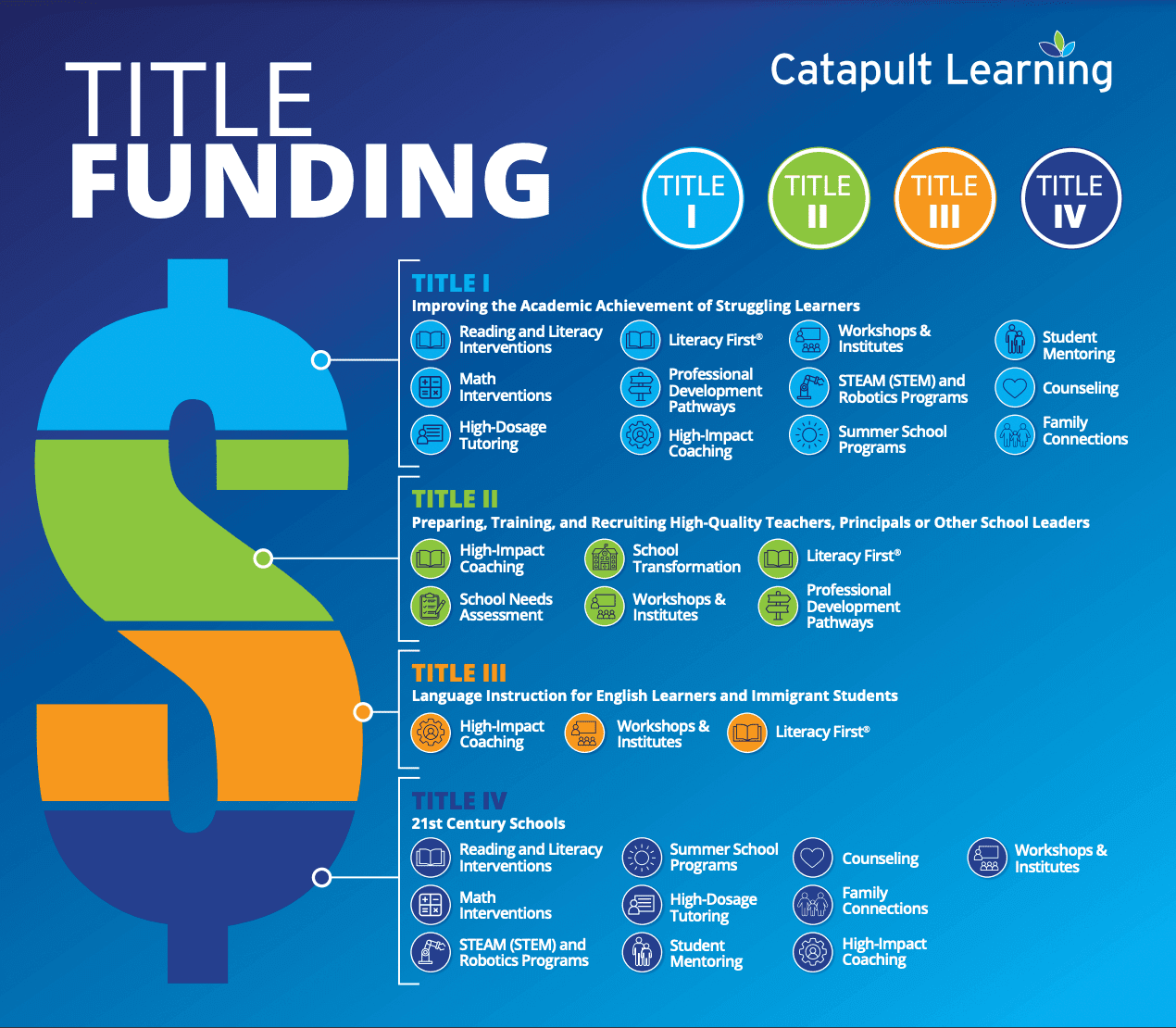Our school partnership experts help schools understand and navigate funding resource channels to optimize their services and allocation. We’ll customize a solution tailored to your district and school goals, timeline, and budget while assisting district leaders in remaining compliant with federal government requirements.
The Emergency Assistance to Non-Public Schools (EANS) program—a significant source of funding for critical services that addressed the pandemic’s impact on students and staff over the past few years—will be ending soon. However, you can ensure those important services continue without interruption through other funding channels. We’re here to assist you with navigating the funding process and to make sure you don’t lose any funding dollars when moving from EANS to other funds.

Title I
Improving the Academic Achievement of Struggling Learners
Title I gives all children the opportunity to receive a fair, equitable, high-quality education, including effective, supplemental instruction for eligible students, professional development for their teachers, and parent and family engagement activities. Under ESSA, Title I services now include mentoring, STEAM, and one-on-one tutoring. These services can be provided individually or in combination.
Title II
Preparing, Training, and Recruiting High-Quality Teachers, Principals or Other School Leaders
Title II is intended to increase student academic achievement through supporting programs which improve teacher and principal quality and increase the number of highly qualified teachers in the classroom and highly qualified principals and assistant principals in schools.
Catapult Learning Programs
Title III
Preparing, Training, and Recruiting High-Quality Teachers, Principals or Other School Leaders
The purpose of Title III is to ensure that English Learners (ELs) attain English proficiency, including instruction specifically for ELs and recent immigrants, support for their teachers and other educational personnel, family engagement activities, and the purchase of materials to support EL instruction and programs for immigrant children and youth.
Catapult Learning Programs
Title IV
21st Century Schools
Title IV provides student support, academic enrichment grants, and 21st Century Learning Community Centers. Title IV-A can be allocated toward projects developing well-rounded education, safe and healthy schools, and effective use of technology. Click here to learn more about Title IV-A.
EANS
The EANS (Emergency Assistance to Non-Public Schools) program is broken into two allocations:
- EANS I is $2.75 billion allocated to non-public elementary and secondary schools as part of the Governor’s Emergency Education Relief (GEER II) fund under the Coronavirus Response and Relief Supplemental Appropriations (CRRSA) Act (Dec 2020). EANS I funding is prioritized to those non-public schools that enroll low-income students and are most impacted by COVID-19. Reimbursements for allowable expenses incurred since March 13, 2020 are permitted.
- EANS II is a second round of an additional $2.75 allocated as part of the American Rescue Plan (ARP) Act (March 2021). Under EANS II, a State Education Agency (SEA) provides services or assistance to non-public schools that enroll a significant percentage of children from low-income families and are most impacted by COVID-19. Reimbursements are not allowed under EANS II.
For more information on EANS funding, watch Catapult Learning’s EANS-focused webinars and visit our EANS FAQs page. The U.S. Department of Education’s EANS FAQ page is a helpful resource as well.
For more information on EANS funding:
Watch Catapult Learning’s EANS-focused webinars and visit our EANS FAQs page. The U.S. Department of Education’s EANS FAQ page is a helpful resource as well.
IDEA
Individuals with Disabilities Education Act (IDEA)
The Individuals with Disabilities Education Act (IDEA) is both a civil rights statute and a federal education program. The overall goal is to ensure that students with disabilities are provided the same opportunity for education as those students who do not have a disability.
State Funding
State Level Funding
States provide grants to achieve statewide educational goals and initiatives. Catapult Learning programs help states support the learning needs of a diverse student community.
Catapult Learning Programs
Other Funding Sources
Private, district, and other agency funds
Private, district, and other agency funds are dedicated towards improving learning opportunities to students. We have extensive experience collaborating with educational partners with inclusion in grant submissions to achieve educational goals and objectives.
Contact Us to Learn More
